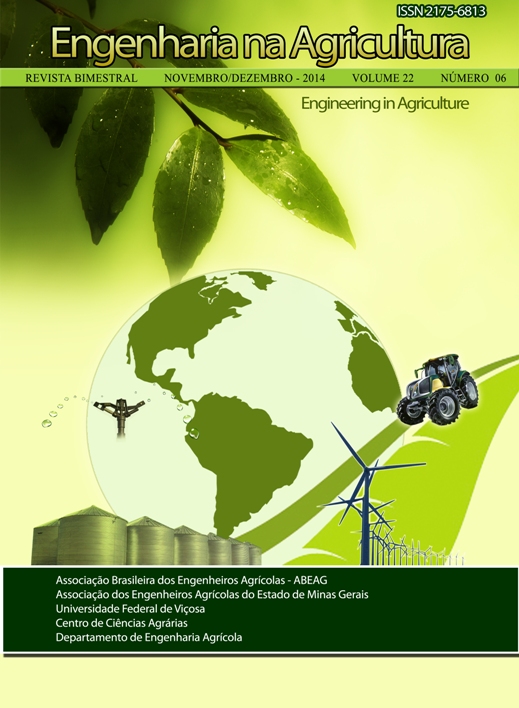DECAIMENTO DE BACTÉRIAS DO GRUPO COLIFORMES EM SOLOS COM COBERTURA VEGETAL E NU - DOI: 10.13083/1414-3984.v22n06a08
DOI:
https://doi.org/10.13083/reveng.v22i6.496Palavras-chave:
Águas residuárias, fertirrigação, micro-organismos indicadoresResumo
A fertirrigação é uma das alternativas para a disposição/tratamento de águas residuárias e traz, como grande vantagem, a possibilidade de aproveitamento agrícola dos nutrientes nelas contidos. Entretanto, é importante considerar o risco sanitário dessa prática, notadamente quando é utilizado esgoto doméstico submetido a tratamento inferior ao de nível terciário. Fatores como temperatura, incidência de raios UV, predação e competição podem proporcionar grande decaimento no número de micro-organismos exógenos no solo. Com a realização deste trabalho objetivou-se monitorar a sobrevivência e obter a taxa de decaimento de organismos indicadores, coliformes totais (CT) e coliformes termotolerantes (CF – E. coli), após 32 dias da aplicação de esgoto sanitário bruto em solo com cobertura vegetal e nu. A cobertura vegetal propiciou maior dispersão das bactérias no solo, proporcionando menor contagem na camada de 0-20 mm. Verificaram-se menores coeficientes de decaimento de bactérias do grupo coliformes totais que E. coli. No trigésimo segundo dia após a aplicação do esgoto sanitário, a contagem de E coli passou a ser insignificante tanto nas áreas em que havia cobertura vegetal como em solo nu, estimando-se que se tornem desprezíveis após 6,6 e 13,0 dias respectivamente, após sua aplicação ao solo. A fertirrigação mostrou ser uma técnica adequada para tratamento/disposição final de esgotos sanitários no que se refere à inativação de organismos patogênicos.Downloads
Downloads
Publicado
Como Citar
Edição
Seção
Licença
Autores que publicam nesta revista concordam com os seguintes termos:
O(s) autor(es) autoriza(m) a publicação do texto na da revista;
O(s) autor(es) garantem que a contribuição é original e inédita e que não está em processo de avaliação em outra(s) revista(s);
A revista não se responsabiliza pelas opiniões, ideias e conceitos emitidos nos textos, por serem de inteira responsabilidade de seu(s) autor(es);
É reservado aos editores o direito de proceder a ajustes textuais e de adequação às normas da publicação.
A partir da submissão, o autor estará cedendo integralmente seus direitos patrimoniais da obra à publicação, permanecendo detentor de seus direitos morais (autoria e identificação na obra) e de acordo com a Licença Creative Commons, CC BY-NC.








 Esta obra está licenciada com uma Licença
Esta obra está licenciada com uma Licença 